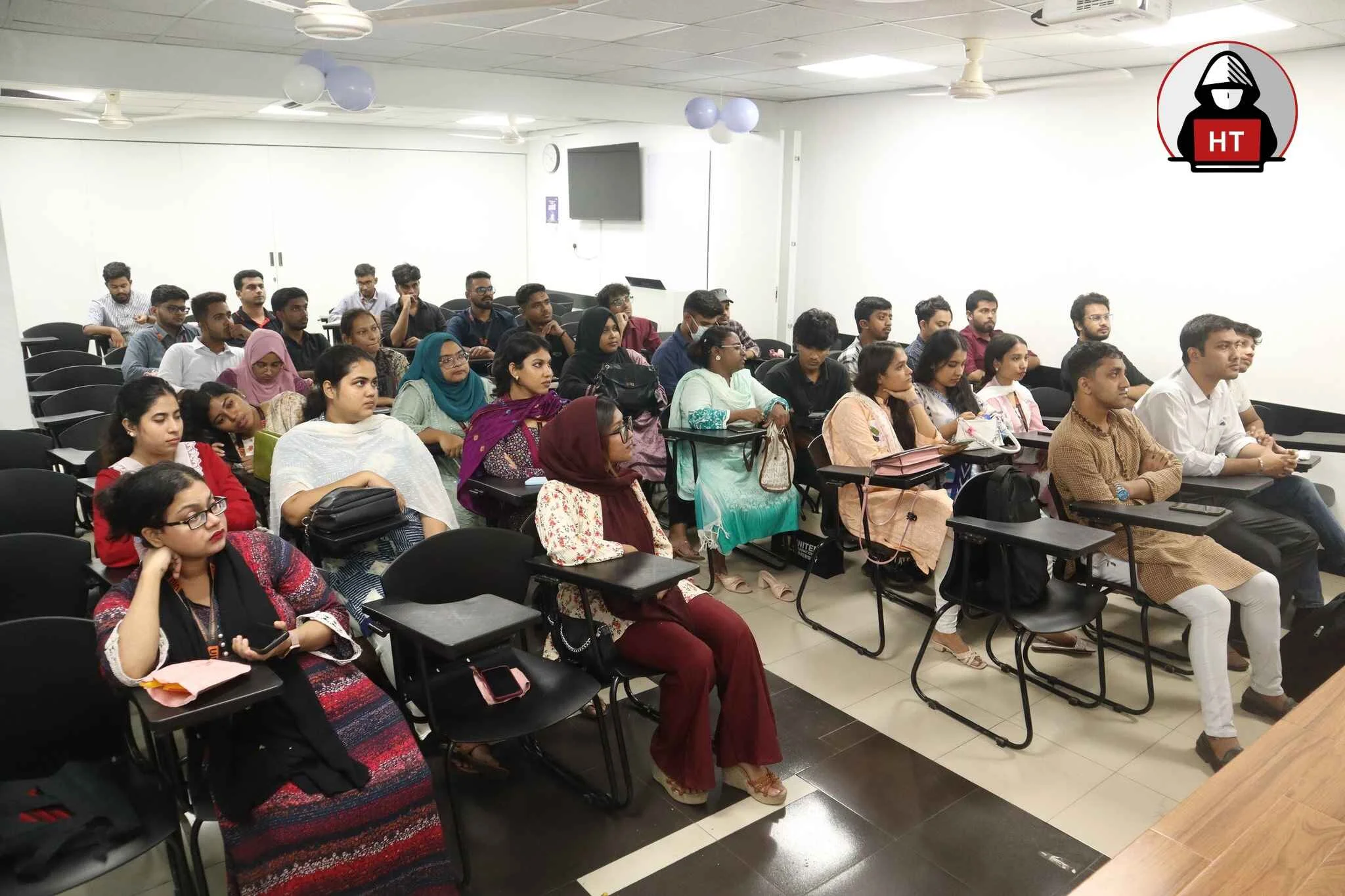Web Application Penetration Testing is a critical aspect of cybersecurity focused on evaluating and identifying vulnerabilities in web applications. The goal is to simulate attacks that hackers might attempt to exploit and, by identifying weaknesses, prevent potential threats. This testing is crucial as web applications are often the entry point for malicious attacks targeting sensitive data, compromising privacy, and exploiting flaws in application logic. Penetration testing aims to ensure that the application can resist common threats by identifying potential vulnerabilities and suggesting ways to patch them. Penetration testers, often called ethical hackers, use similar techniques as cybercriminals but with permission from the organization to avoid damaging their reputation or systems. Participating students learn to use the tools for scanning and exploiting the web application flaw, and come to understand the Burp Suite, OWASP ZAP, Nmap, Metasploit & SQLmap. Hands on labs and real world scenarios must have parts to make them practical and test and secure your web application.
 Top Ranked Cyber Secuirty Course By HACKING TEACHER
Top Ranked Cyber Secuirty Course By HACKING TEACHER


































AI Powered Full Stack Web Development Course
Learn AI powered web development and futureproof your career to lead in an AI dominated tech industry.
However, cybersecurity processes called penetration testing and vulnerability assessment do have something in common: to identify and mitigate security vulnerabilities. A systematic evaluation of the security of a computing asset or system to identify, classify and prioritize vulnerabilities followed by recommendation of remediation with the objective to reduce risk with the investment of resources.
A process to systematically evaluate security of a component or system to find out, sort out and prioritise the vulnerabilities with suggestions for remedial action in order to facilitate reduction in risk potential against the resource employed. A vulnerability assessment exists to create an extensive list of issues where security is concerned without actually exploiting them but instead aims to report and plan remediation. In most cases it is less intrusive and therefore appropriate for day to day security checks and compliance.
On the other hand, penetration testing (also called ethical hacking) is a more active process whereby we try to ‘hacker attack’ systems to exploit their vulnerabilities and see what effect they would have in reality. They try to infiltrate the system or the sensitive data in a system using a combination of both manual and automated tools just as an attacker would. We want to find exploitable weaknesses, measure the level of risk to which an application is exposed, and propose actionable recommendations to increase defensive strength.
In penetration testing, you are more targeted – even focused on certain assets – and need to have a greater technical understanding and creativity. Vulnerability assessments are more about breadth than about depth, but penetration testing is focused more on depth than on breadth. When paired together, they help fill each other's gaps; vulnerability assessments detect potential problems and penetration testing confirms exploitability of these identified problems.
































Highest Salary
Average Salary
Hiring Partners


+ Unlimited Pwnbox usage
+ CPE credits submission
+ Unlimited Pwnbox usage
+ CPE credits submission
+ Unlimited Pwnbox usage
+ CPE credits submission
+ Unlimited Pwnbox usage
+ CPE credits submission
The Hacking Teacher Certification teaches educators about teaching ethical hacking and cybersecurity with the proper skills. This program offers extensive training on some of the most technology pressing issues facing the cyber security world today including penetration testing, threat analysis and secure coding. It is ideal for IT professionals and trainers to ensure that all knowledge is transferred for audiences to inspire the next generation of cybersecurity experts.

We focus on essential exploiting topics such as SQL Injection, Wireless Networks, IoT Hacking, Cloud Computing, social engineering, sniffing, and session hi jacking.










Enterprise Attack Simulation Training is an opportunity to practice simulating cyberattacks against corporate networks on a hands-on basis. Participants learn how to find vulnerabilities, to exploit weaknesses and to evaluate system defenses using advanced tools and methodologies.

The practice is in live, not simulated virtual IT labs built according to the leading vendors certifications, including: Apart from these CompTIA, Microsoft, Cisco, VMware etc." Our labs were designed to be interactive, and targeted towards a lot of real world experience so learners can hone their practical skills. We work with subject matter experts on networking, security, cloud computing and more, and we create and deliver labs based on these core IT competencies.











Hacking teacher Learning is here to ensure that you don’t get left behind in a world of technology that is too quickly changing. On a day to day basis, we’re recording and sharing content that can impact your bottom line.

Web application penetration testing course contains subjects around web application security, with basic information on how to find, compromise, and protect weaknesses in Web Applications. Topics typically include: SQL Injection, XSS, CSRF and Insecure Deserialization are OWASP Top 10 vulnerabilities. Methodologies and frameworks on testing web applications.
Tools used for penetration testing like (Burp Suite, OWASP ZAP, Metasploit, and Nikto). Exploits of authentication issues, session management flaws and business logic. Teaching about Post exploitation and forensics as well as reporting. Hands-on labs are included for the purpose of practicing real world penetration testing scenarios
Web Application Penetration Testing courses teach students to use a range of industry-standard tools: Burp Suite is a web application security testing tool with much more to offer like intercepting proxies, vulnerability scanners and much more. OWASP ZAP (Zed Attack Proxy): Web app vulnerability scanner, detection for security bugs (CWE & OSVDB).
Metasploit: A penetration testing framework with powerful attack tools for exploiting system weakness and testing system defenses. SQLmap: A tool to detect and exploit SQL injection flaws, automatically. Nikto: It is a web server scanner which identifies vulnerabilities and misconfigurations. This set of tools is used to find common and advanced web application vulnerabilities.
While there are beginner-level courses, an ideal background includes: Knowledge of web technologies: HTML, CSS, JavaScript, the web application. Networking knowledge: Overview of TCP/IP, DNS and HTTP protocols. Security fundamentals: Basic security concepts like firewalls, encryption, and authentication. ,However, there are courses which do not require prior experience but a technical background is always useful in learning the concepts at a more rapid pace.
The duration varies depending on the course type: Just like nearing the end of a real 2 to 4 week bootcamp. Online/self-paced courses: This normally takes anywhere from 2 to 6 months with your availability and quickness to learn.
Certification programs: 1-3 months courses are the most popular courses to get certifications like OSWE, CEH, or eWPT. Duration depends on the depth of the course; advanced course of web application security takes much more time due to its complex nature.
After completing a Web Application Penetration Testing course, you can pursue various career opportunities, such as: Audit System Administrator: Manage all of the corporate articles and the auditing system. Application Security Engineer: Security of applications should be focused on application development and their life cycle. Security Consultant:
What types of organizations would want help to improve their security posture and conduct vulnerability assessments? Red Team Specialist: Assess organization’s defense mechanism through simulation of real world attacks. Web application penetration testing becomes an increasingly essential task across industries such as tech, finance, e commerce, and government, hence the increasing demand in this field.
Quite a number of Web Application Penetration Testing courses and are available online, and some even are self paced. Popular platforms offering these courses include: Udemy has a lot of web application security courses available: Cybrary: Combines self paced with instructor led courses that focus on practical skills. PortSwigger Academy: eLearnSecurity: Free online resources and labs and free security testing labs for web applications.
Provides online, self-paced courses covering practical penetration testing skills. The great thing about these online courses is that you can learn on your lines, and some platforms also allow for instructor-led content for more structured learning.

Interview wifi Hacking

Life of Hacking Teacher

Microsoft on Vishal Sharma

Software Engineer at SwiftByte
“Fantastic course! The instructors at Hacking Teacher have done an incredible job. The content is comprehensive yet easy to understand, and the hands-on labs really solidify the learning. I’ve gained valuable skills that I can immediately apply in my job. Definitely worth the investment!”

Software Engineer at BrightSpark
“Solid foundation in web pentesting. The course covers all the essentials and provides a good starting point for beginners. I appreciated the practical examples and real-world scenarios. However, I wish there were more in-depth discussions on certain topics. Overall, a worthwhile course for those new to cybersecurity.”

Data Analysis at TechNest
“Average experience with the ‘Hacking Teacher’ course. While the content was informative, I found it to be somewhat outdated. It would benefit from more updates to reflect current cybersecurity trends. Additionally, the course platform could be more user-friendly. Overall, it’s an okay option for beginners, but there are better alternatives out there.”
FAQ
Our online courses are tailored to your specific needs, whether you are an experienced senior executive or a rookie leader.
Lorem ipsum, dolor sit amet consectetur adipisicing elit. Eum laborum qui tempora numquam!
A Web Application Penetration Testing Course provides knowledge of finding, exploiting and securing vulnerabilities in web applications. It talks about OWASP Top 10, SQL Injection, XSS, CSRF, authentication flaws and also advanced testing techniques.
That depends on the program. These courses can take between 2-4 weeks (for beginner courses) or 2-6 months (for comprehensive programs). They can be accomplished in 1 month (or less) with accelerated boot camps.
The prerequisites to the course are a basic knowledge of web technologies, networking and cybersecurity concepts. Having knowledge of programming language (Python, JavaScript, PHP etc) is helpful. Knowledge of tools like Burp Suite, OWASP ZAP and basic knowledge of Linux commands is nice to have.
Offensive Security’s "Practical Web Application Security and Testing (PWK)," SANS’s "Web Application Security Essentials" (SEC542), and PortSwigger’s "Burp Suite Certified Practitioner" are some of the best. For beginners, Hacker1 by HackerOne is a solid free choice.
There are some courses and boot camps that do condensed training programs of core penetration testing skills that you can finish the course in 1 month. The skills, however, take consistent practice to master.
The best training includes courses like Offensive Security’s Web Application Exploits and Defenses (OSWE), SANS SEC542: And PortSwigger’s Burp Suite Certified Practitioner, Web App Penetration Testing and Ethical Hacking. These courses are hands-on experiences and industry recognized credentials.
A Penetration Tester, Application Security Engineer, Ethical Hacker, or Cybersecurity Consultant are some of the roles that you could eventually achieve in a career in Web Application Penetration Testing. They assist organizations to detect vulnerability and protect web applications from cyber threats.
Self learning is possible using free and paid resources which includes OWASP guides, Hacker101, TryHackMe and books like 'The Web Application Hacker’s Handbook.' But formal training or education can help lend weight to your learning, as well as structure to your curriculum.
For beginners, the Burp Suite Certified Practitioner and Certified Ethical Hacker (CEH) are great. The other great certifications are OSWE (Offensive Security’s Web penetration tester) and eWPT (eLearnSecurity’s web application penetration tester).
They require knowing how to use web technologies and programs such as networking, and JavaScript or Python. Knowing owasp top 10 vulnerabilities and having good ideas on how to exploit them and techniques like bypassing Authentication using Burp suite, OWASP ZAP and SQLMap etc.
Usually, the criteria comprises, as the very basics, some knowledge in networking, web technologies and some basic concepts of cybersecurity. Knowledge of some common programming languages: Python or JavaScript or tools used for the reverse engineering of web applications: Burp Suite or OWASP ZAP. The need is strong analytical and problem solving skills
Web Application Penetration Testing Courses, and OSCP (Offensive Security Certified Professional) are not the same. Web penetration courses are focused on web application security, whereas OSCP gives a general view on network and systems penetration. They are both valuable, just for different reasons.
Sure, it can be hard, you will need to have a good understanding of web application architecture, locate vulnerabilities, and use sophisticated tools. But with practice, hands on practice, and the right resources it is doable.
These courses are available on Offensive Security e.g. OSWE, SANS Institute, SEC542, PortSwigger Academy and eLearnSecurity. Quality training on Udemy, Coursera and TryHackMe are also available on online learning sites.
Offensive Security’s OSWE, SANS SEC542, and PortSwigger’s Burp Suite Certified Practitioner are the best courses. Hacker01 by HackerOne is a good starting point for beginners.